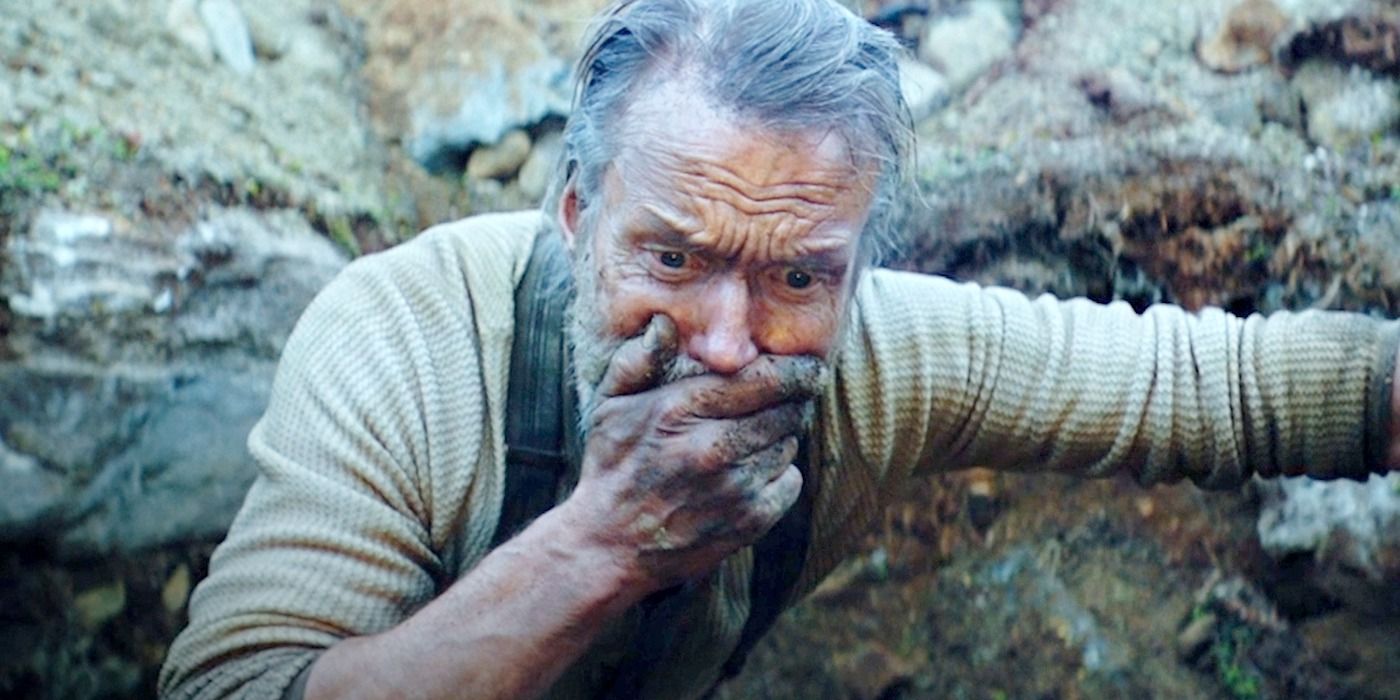The Big Picture
- Sisu is an action-packed war thriller that sheds light on Finland's involvement in World War II, showcasing their dangerous position between the Soviet Union and Nazi Germany.
- The film follows the story of Aatami Korpi, a veteran commander who discovers a massive gold deposit and must navigate through Nazi-occupied territory to sell his newfound wealth.
- Sisu captures the historical context of Finland's Winter War with the Soviet Union and the Continuation War with Germany, emphasizing the Finnish people's resilience and determination in the face of oppression.
Sisu is the latest war thriller from Finnish writer/director Jalmari Helander. Chock-full of dynamic battle sequences and plenty of entertaining gore, Sisu is the definition of "all killer, no filler" from beginning to end. Set in the northern region of Lapland, Finland in 1944, Sisu spotlights an often-overlooked aspect of World War II: Finland's dangerous situation between the Soviet Union and Nazi Germany, a country uniquely sabotaged between 1939 and 1945 by both superpowers during the combat that changed the world forever. Let's examine Sisu's significant historical context and how the film portrays Finland's complicated affairs during World War II.
Clocking in at a brisk 91 minutes, Sisu wastes no time setting the scene for its compelling narrative, which centers around a mysterious gold prospector called Aatami Korpi, also known as "The Immortal," played by Finnish actor Jorma Tommila. A veteran commander in the Winter War against the Soviet Union, Aatami retreats to the natural solitude of the Lapland wilderness after losing his family during the violent conflict. One day in 1944 –– as Germany loses its grasp of power in Europe –– Aatami hits the jackpot when he comes across a massive gold deposit, prompting him to return to a Nazi-occupied city to sell his newfound fortunes. Unfortunately, on his expedition back into the war-torn urban zones, Aatami is detected by a ragtag Nazi squadron that discovers his gold stash, driving the German troop to use their infamously violent scorched earth tactics against the Finn, a monumental error of judgment the Nazi's quickly come to regret.
Finland Fought the Winter War Against the Soviet Union
Finland was not officially an independent country until 1917 when the Bolshevik Revolution finally allowed the Nordic country to shake off the yoke of the Russian Empire. Historically, Russia had always been strategically interested in gaining Finnish territory since the countries share the same border close to Saint Petersburg, or as it was known during the Soviet era, Leningrad. While Adolf Hitler was transparent with his philosophy that Communism was one of Nazi Germany's greatest threats, the USSR's leader Joesph Stalin maintained a great interest in staying on Germany's good side, especially as the country's "Socialist Utopia" was being slowly built following the extended bloody conflict of the 1917 revolution. In August 1939, the Molotov–Ribbentrop Pact (also known as the Hitler-Stalin Pact) was signed, a non-aggression treaty designed for Germany and the Soviet Union to partition Eastern Europe between the two powers. After the agreement, Germany wasted no time invading Poland on September 1, 1939, prompting England and France to declare war against Germany and officially starting World War II.
The Soviet Union entered the conflict on the Germans' side when they stormed Poland from its Eastern border. In November 1939, after Finland refused to cede island territories near Leningrad to the USSR, Stalin's military invaded the country and installed a pro-Communist puppet government, initiating the Winter War. Lasting until March 1940, the Winter War was the second official conflict of World War II. It ended in a peace agreement between the USSR and Finland, known as the Moscow Peace Treaty, with the latter coerced to give up twelve percent of its territories. While the Finns suffered an estimated 25,000 losses during the Winter War, the developing Nordic country fared vastly better than its Bolshevik aggressors; the USSR lost roughly 200,000 soldiers in the 103-day struggle. Furthermore, the Finnish battalions became renowned for their fierce tactics and well-trained troops, with a greater understanding of the climate and topography of their homelands working in their favor to tremendously weaken the USSR army. Sisu's title is derived from the traditional Finnish idea of unstoppable determination in the face of great strife; this concept perfectly encapsulates the invincible spirit of the film's protagonist, Aatami, as he comes back time and time again throughout Sisu to overpower his Nazi oppressors, embodying the strength of the tyrannized Finnish people during the war.
The USSR's Moscow Armistice Mandated Finland Break Ties With Germany
After the Moscow Peace Treaty was signed, the USSR continued meddling in Finland through further land grabs and economic involvement, prompting the Finns to join the side of Germany in the June 1941 invasion of the Soviet Union, known as Operation Barbarossa. Nazi troops quickly moved into Finland to access the Nordic country's natural resources to aid the war effort, along with using Finland as a more-direct land bridge to northwestern regions of the USSR, specifically Leningrad. While the integrity of Finland's collaboration with the Nazis can be questioned from a modern perspective, many Finns saw this alliance as a partnership against a common enemy spurred by the country's land losses since the Winter War. As a result, Finland's reinstated fight against the USSR with the Germans on their side became known as the Continuation War.
While Finland succeeded in regaining some of its territories lost to the USSR during the Continuation War, by 1944, the Finnish military was becoming depleted by their contributions to the combat on the Eastern Front in the USSR. It eventually became clear that Germany, and in turn Finland, would fail in their domination of the Soviet Union. In September 1944, the Moscow Armistice was drawn up by the USSR, which would again require Finland to hand over strategic territories and mandate that the Finns break off all diplomatic ties with Germany.
‘Sisu’ Focuses on the Lapland War Between Finland and Nazi Germany
The Moscow Armistice led to the Lapland War, fought between Finland and Nazi Germany, as the Finns expelled and disarmed Nazi troops as they made their way back westward after imminent defeat. Another brief conflict, the Lapland War lasted just seven months but left much destruction in its wake. While the German expulsion from Finland began relatively peacefully, the Nazis eventually began to employ violent scorched-earth tactics, destroying roads as they traveled over them and positioning bounteous land mines to delay and destroy the ensuing Finnish troops. Shortly after, the scorched-earth strategy by the Germans began to target all Finnish building structures except churches and hospitals, devastating Finns throughout the north of the country, particularly in the Lapland region. The harsh brutality of the German troops as they vacated Finland during the Lapland War is where Sisu centers its historical focus, with the Nazis' appalling treatment of the Finns clearly portrayed through the hardships faced by the film's unlikely hero and his even more unexpected sidekicks, the Finnish female concubines that the Germans have abducted.
An eccentric yet highly satisfying war thriller that highlights a frequently-forgotten aspect of World War II, Sisu makes for a fantastically entertaining experience that will have audiences remembering Jalmari Helander's name and checking out the Finnish filmmaker's other movies. Outlandishly comical as it is gruesomely violent, Sisu delivers something special for any audience, elevating the film with a certain universality that is bound to please many viewers. Since its April 28 theatrical release in the United States, Sisu has respectively earned over $7 million, contributing to its worldwide earnings of just over $14 million. However, if you weren't able to catch Sisu during its theatrical run, the film is available on VOD and is now streaming Starz




